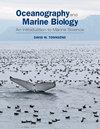Aspects of the physiology, biology and ecology of thalassinidean shrimps in relation to their burrow environment
1区 生物学
Q1 Agricultural and Biological Sciences
引用次数: 54
Abstract
This paper examines the burrow environment of thalassinidean shrimps (commonly called mud shrimps), drawing on our experience of a range of U.K. species with differing lifestyles (Calocaris macandreae, Jaxea nocturna, Callianassa subterranea, Upogebia stellata, U. deltaura) and makes comparisons with published work on a diversity of species elsewhere. Information on thalassinidean ecology and burrow structure is used, together with measurements of physicochemical conditions, to illustrate the range of conditions which thalassinideans may experience within their burrows, where conditions may be potentially hostile (hypoxic, hypercapnic, high in sulphide). Behavioural and physiological adaptations to the thalassinidean burrow-dwelling lifestyle are considered, particularly those that relate to survival in hypoxic and sulphidic conditions. Mud shrimps actively irrigate their burrows by pleopod beating, this often being intermittent: burrow irrigation is most intense in suspension-feeding species. Passive irrigation of burrows may also occur, generated by current flow at the plane of the mud surface. Thalassinideans spend progressively more time irrigating their burrows during hypoxia, but such activity is often not pronounced until the oxygen partial pressure of the water has declined to low levels. The shrimps are highly tolerant of hypoxia and are able to maintain aerobic metabolism down to very low oxygen partial pressures. Burrow water is pumped across the gills by the scaphognathites and their activity increases under hypoxia, thus maintaining a supply of oxygen to the gills. Rates of oxygen consumption are lower in thalassinideans than in non-burrowing decapods. The haemocyanins of thalassinideans have high oxygen affinities and have moderate Bohr values that facilitate oxygen uptake during hypoxia. When aerobic respiration can no longer be maintained, thalassinideans resort to anaerobic respiration and show a high tolerance of anoxia, with some species being able to survive anoxic conditions for several days. Thalassinideans may encounter high concentrations of sulphide as a result of their fossorial lifestyle and have a high tolerance to sulphide exposure, oxidising sulphide to thiosulphate. Relationships are explored between mud-shrimp activity, including feeding, burrow structure and burrow physicochemistry. For most mud shrimps the burrow is the feeding environment. Food is extracted either from the burrow water, or the burrow wall, or from macroscopic material accumulated in the burrow lumen. Microorganisms are important in decomposition processes within the burrow, in burrow geochemistry and in mud-shrimp nutrition. Interrelationships between the burrow environment and the wider environment are also considered. The irrigatory activity of mud shrimps not only introduces oxygenated conditions into the sediment column, but also exports nutrients to the overlying water. Burrow walls may act as sinks for trace metals, radionuclides and other chemicals and are important loci for diagenetic processes. Various burrow associates share the burrow environment with thalassinideans and some of the implications of such associations are discussed briefly. Throughout, various topics requiring further research are identified.海虾的生理、生物学和生态学与地穴环境的关系
本文研究了海虾目虾(通常称为泥虾)的洞穴环境,借鉴了我们对一系列生活方式不同的英国物种(Calocaris macandreae, Jaxea nocturna, Callianassa subterranea, Upogebia stellata, U. deltaura)的经验,并与其他地方发表的物种多样性研究成果进行了比较。关于海地螺的生态和洞穴结构的信息,以及物理化学条件的测量,被用来说明海地螺在洞穴中可能经历的条件范围,这些条件可能是潜在的敌对条件(缺氧、高碳酸、高硫化物)。考虑了对海腹鱼穴居生活方式的行为和生理适应,特别是那些与缺氧和含硫条件下的生存有关的适应。泥虾通过多足类动物的拍打积极地灌溉它们的洞穴,这通常是间歇性的:在悬浮捕食的物种中,洞穴灌溉最为强烈。也可能发生由泥浆表面平面上的水流产生的洞穴被动灌溉。在缺氧的情况下,thalassinidea花越来越多的时间灌溉它们的洞穴,但这种活动通常在水的氧分压下降到很低的水平时才会出现。虾对缺氧具有高度的耐受性,能够在非常低的氧分压下维持有氧代谢。洞穴里的水被舟石抽过鳃,在缺氧的情况下,它们的活动会增加,从而维持鳃的氧气供应。海鞘动物的耗氧率比非穴居十足动物低。thalassinideans的血青素具有高的氧亲和性和中等的玻尔值,有助于缺氧时的氧吸收。当有氧呼吸不能再维持时,海鞘类动物就会转向无氧呼吸,并表现出对缺氧的高耐受性,有些物种能够在缺氧条件下存活数天。由于其化石生活方式,Thalassinideans可能会遇到高浓度的硫化物,并且对硫化物暴露具有很高的耐受性,将硫化物氧化为硫硫酸盐。探讨了泥虾活动之间的关系,包括取食、洞穴结构和洞穴物理化学。对大多数泥虾来说,洞穴是它们的觅食环境。食物要么从地穴水中提取,要么从地穴壁中提取,要么从地穴腔中积累的宏观物质中提取。微生物在地穴分解过程、地穴地球化学和泥虾营养中起着重要作用。还考虑了洞穴环境和更广阔环境之间的相互关系。泥虾的灌溉活动不仅将含氧条件引入沉积物柱,而且还将营养物质输出到上覆水。地穴壁可作为微量金属、放射性核素和其他化学物质的汇,是成岩过程的重要位点。各种穴居亲缘动物与thalassinideans共享穴居环境,并简要讨论了这些关联的一些含义。在整个过程中,确定了需要进一步研究的各种主题。
本文章由计算机程序翻译,如有差异,请以英文原文为准。
求助全文
约1分钟内获得全文
求助全文
来源期刊
自引率
0.00%
发文量
0
期刊介绍:
With increasing interest in the field and its relevance in global environmental issues, Oceanography and Marine Biology: An Annual Review provides authoritative reviews that summarize results of recent research in basic areas of marine research, exploring topics of special and topical importance while adding to new areas as they arise

 求助内容:
求助内容: 应助结果提醒方式:
应助结果提醒方式:


